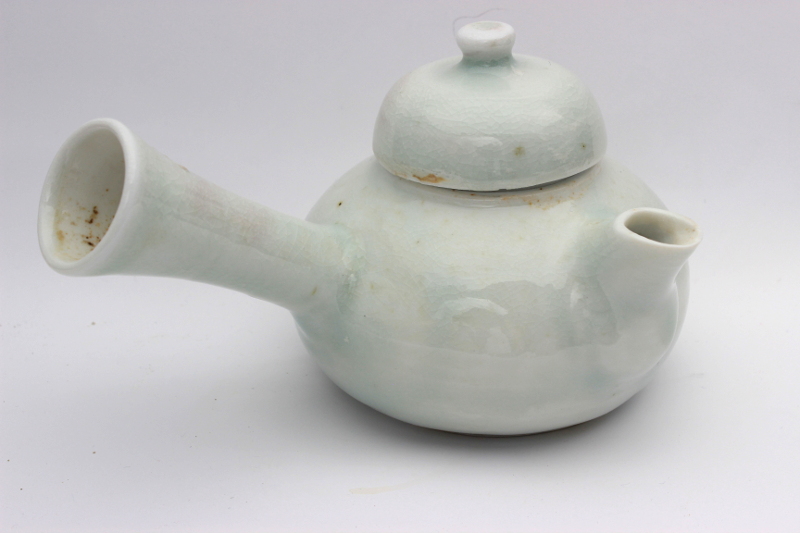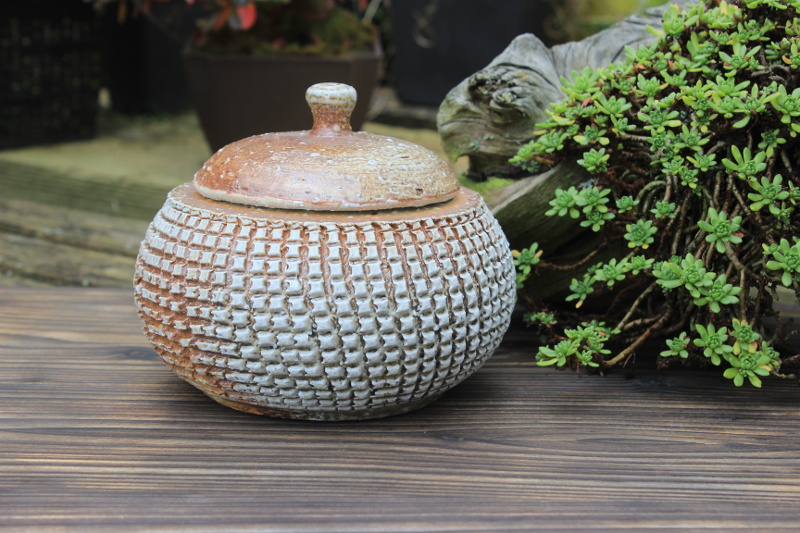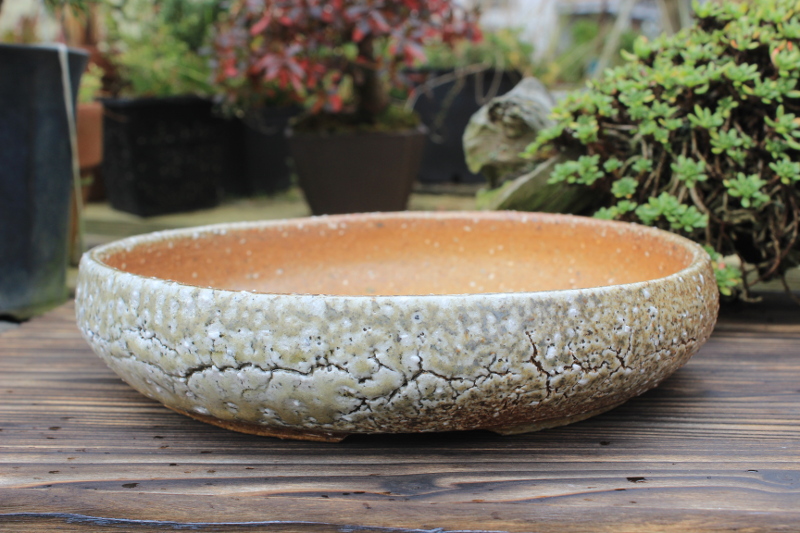Ash Glazes
 Ash glazes are among the oldest glazes in the ceramics business. Shigaraki and Bizen ceramics from Japan are famous all over the world. Due to the wood fired kiln ash was always available in a good cleanness and amounts. Ash glazes in general have a very simple composition. Given high enough temperatures (1250°C to 1300°C), ashes can be used almost purely as glaze. Clay is added to the ash to enhance the glaze-fit properties, as ash is acting as a flux.The disadvantage of ash from plants is, that the composition of the elements can vary significantly. Therefore, recipes with ash glazes can only been takes as inidication and are not reproducible even for different batches of the ash. In Japan, the traditional ash source is rice straw, as there is plenty available and the SiO2 content is high. The color of the glaze is resulting from very small amounts of iron, manganese, potassium, phosphor, etc. In our area we can find a good amount of old vines, which are ideal, as they have a very hard and old wood, that has stored over centuries a high concentration of metal ions, which leads to especially beautiful colors of the glazes.
Ash glazes are among the oldest glazes in the ceramics business. Shigaraki and Bizen ceramics from Japan are famous all over the world. Due to the wood fired kiln ash was always available in a good cleanness and amounts. Ash glazes in general have a very simple composition. Given high enough temperatures (1250°C to 1300°C), ashes can be used almost purely as glaze. Clay is added to the ash to enhance the glaze-fit properties, as ash is acting as a flux.The disadvantage of ash from plants is, that the composition of the elements can vary significantly. Therefore, recipes with ash glazes can only been takes as inidication and are not reproducible even for different batches of the ash. In Japan, the traditional ash source is rice straw, as there is plenty available and the SiO2 content is high. The color of the glaze is resulting from very small amounts of iron, manganese, potassium, phosphor, etc. In our area we can find a good amount of old vines, which are ideal, as they have a very hard and old wood, that has stored over centuries a high concentration of metal ions, which leads to especially beautiful colors of the glazes.
A special group of ash glazes are the celadon glazes, which were already highly respected in the Tang-, Song- and Yuan-time in China, Korea and Japan. Small amounts of iron -between 0,5% and 1%- resulted in a reduction kiln-environment in the famous transparent green and blue shades, that remind on jade and make the ceramic therefore especially valuable.

Here you will find some impressions of glazes with a high amount of ash in the recipe.

Containers are the little sisters of tea pots, but have more degrees of freedom for decoration and shape.

Bonsai pots are a real challenge, as they normally recede into the background to point the attention to the trees.